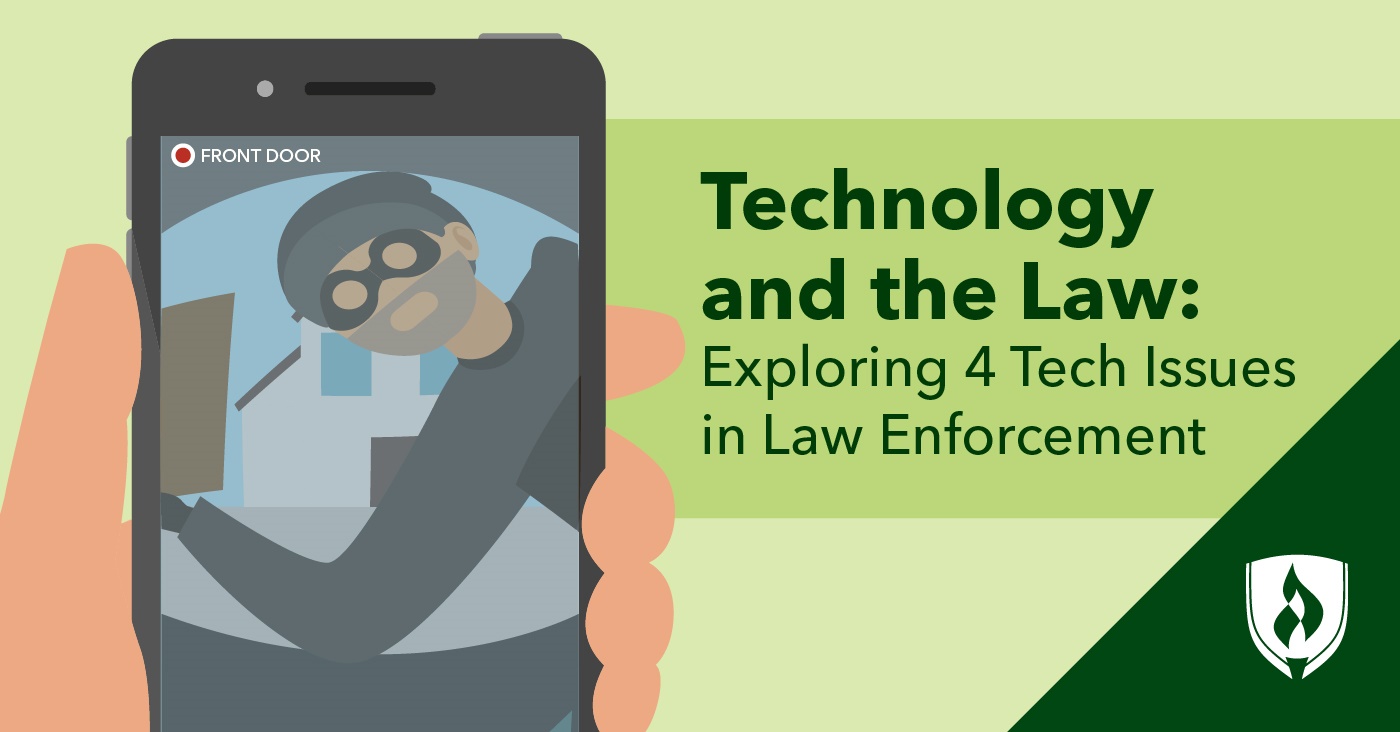
It’s no secret that technology is one of the fastest-moving industries in our world today. It can feel like every single month brings in headlines about a new technology with the power to reshape society as we know it. If you feel bewildered or concerned by the speed of this sector—you aren’t alone.
According to CNET, public concern over the lack of regulation in tech is on the rise, with over 60 percent of survey respondents worried governments cannot keep up with innovations in technology.1 That concern becomes especially sharp if you consider law enforcement.
For example, after the San Bernardino shooting in 2015, Apple fought the FBI over iPhone encryption, creating a highly publicized lawsuit that explored whether tech companies should have to partner with law enforcement agencies. In the process, courts utilized an act written over two centuries ago.
“Frankly, the fact that the court is having to rely on the All Writs Act of 1789 speaks volumes and is embarrassing,” say attorneys Marc Lamber and James Goodnow, legal commentators with Fennemore Craig, P.C. “We shouldn’t have to rely on laws that trace back hundreds of years. As technology changes more quickly and more vastly, it will put more and more pressure on the legal system—and all those involved—to adapt to those changes.”
While this frontier of technology and the law is definitely challenging, it also presents some thrilling opportunities for law enforcement agencies—and anyone interested in them—to adapt, thrive and find new ways of achieving their objectives.
If you are curious about how technology is changing law enforcement, read on!
4 Technology issues influencing law enforcement today
1. Facial recognition technology
If you’ve ever watched a spy movie, you are probably familiar with a representation of facial recognition technology. With the right type of camera, algorithms can scan human faces in a crowd and search for matching features in image databases. According to the Electronic Frontier Foundation (EFF), lighting issues, distance, angle and image quality can all be complicating factors of facial recognition, and some systems do better than others in accuracy and speed.2
Indeed, certain elements of facial recognition technology (FRT) are old news in law enforcement. Many local agencies have been using variations of facial recognition for over a decade. And many areas in transportation can run these technologies on an international scale. Real-time FRT in airports, for example, can flag wanted individuals or assist to locate missing persons.
The potential adaptations of these technologies are pretty boundless, raising concerns about misuse, privacy rights, misidentification and who/which agencies should have access to that much surveillance data.
Many elements of facial recognition technology and its usage are controversial. The National Conference of State Legislatures (NCSL) reports that a company in the U.S. mixed FRTs with social media databases, using citizen-uploaded photos as part of their search database for law enforcement. “It’s doubtful that social media users expected the photos they posted would be used in this way or that images they deleted or that were posted by others would be widely available for anyone to use,” the NCSL writes, adding that the company faces several class-action lawsuits.3
Since social media image databases typically have far more pictures to work with than any law enforcement database, conversation and debate between their cross-collaboration will likely continue, even as the capacities of FRT grow more advanced.
2. Video doorbells
There are so many smart-home gadgets on the market, but none are likely as linked to law enforcement as a video doorbell. Doorbells that provide filmed footage of the front porch and the surrounding area have grown in popularity with people looking for ways to deter burglaries and “porch pirate” package theft.
Naturally, when police officers are investigating crimes in an area speckled with these handy little cameras, the technology’s relevance to law enforcement skyrockets. The popular video doorbell company Ring faced public scrutiny in 2019 for providing “heat maps” of its users to over 300 local law enforcement agencies without user knowledge or consent.
While Ring (now owned by Amazon) has since disabled the heat map feature, the company still maintains partnerships with over 600 law enforcement agencies around the U.S.
The conflation of profit and security information is a particularly interesting question for law enforcement. Should a private company be permitted to access local 911 calls to disseminate potential crime information on its app? Should law enforcement agencies be allowed to encourage citizens to purchase video doorbell technology to further its potential surveillance area? Could wrongdoers hack into this technology, creating a crime risk instead of a crime deterrent? There are plenty of questions for municipal departments and citizens to evaluate.
3. Official use of social media
With social media use growing in popularity, you’ve likely seen a social media post from a local law enforcement agency at some point. Whether it’s an update on a developing dangerous situation, a photo of the results of a substantial sting operation or a feel-good video of officers lending a hand, there’s no denying the world of law enforcement is full of eye-catching material for social media.
Of course, with community and police relations often in a tense or strained state, it’s important for the law enforcement communications officials behind these accounts to be mindful of their approaches. Some argue the best approach is transparency—no matter how the truth reflects on the department.
Even aside from the public’s desire for transparency, these days information tends to get out quickly—potentially without the correct details. By being active, transparent and engaged on social media, law enforcement agencies have the ability to provide important clarifying details and information to the public during developing situations.
If departments utilize social media, not just for positive public relations releases, but also to be a source citizens can access for timely and relevant information, they can foster better understanding in their communities and more support for the agency.
4. Encryption and personal devices
If you’ve ever watched a detective show, you know all about the concept of warrants. Police officers have procedures in place for when they are allowed or not allowed to search someone’s car, home or person.
But what happens when the crime-related evidence likely exists on a phone, computer or third-party platform? “There are vast frontiers of digital activity that are simply not within the law because until recently, they were non-issues,” adds Kentaro Toyama, author of Geek Heresy: Rescuing Social Change from the Cult of Technology.
Until now, Toyama explains, America has rested on the Fourth Amendment in prohibiting search of a person’s physical home or property without a warrant based on probable cause. But in the digital sphere, questions run rampant. “If your private data sits on data servers owned by someone else, whose property is it?” he asks.
“These questions are part of a Wild West of undetermined law that is being negotiated by tech companies and governments through ‘terms of use’ statements, privacy policies and lawsuits,” Toyama says.
The future of technology and the law
One thing is certain: Law enforcement must adapt quickly to keep up with advances in technology. But these adaptations allow everyone in law enforcement, and the public at large, to innovate as well. It’s an exciting time where everyone from the local police department to international law enforcement agencies can create new policies, adopt new tools and embark on a new frontier of possibility.
If that sounds interesting to you, maybe there’s a role in the wide world of criminal justice you would enjoy! Check out our article “7 Signs You Should Consider a Career in Criminal Justice” for some ideas at what these careers actually require.
1CNET, 60 Percent of People Worry Tech is Moving Too Fast, Study Finds [accessed February 2021] https://www.cnet.com/news/global-trust-in-technology-declining-report-says/
2Electronic Frontier Foundation, Street Level Surveillance: Facial Recognition [accessed February 2021] https://www.eff.org/pages/face-recognition
3National Conference of State Legislatures, Spotlight: Facial Recognition Gaining Measured Acceptance [accessed February 2021] https://www.ncsl.org/research/telecommunications-and-information-technology/facial-recognition-gaining-measured-acceptance-magazine2020.aspx
EDITOR’S NOTE: This article was originally published in 2016 and has since been updated to include information relevant to 2021.




